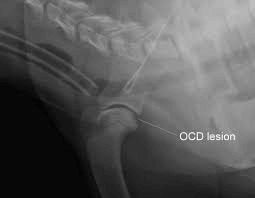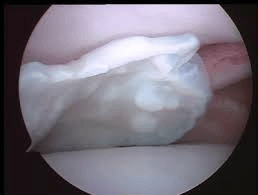By: Stephen Kerpsack, DVM, DACVS
Jack, a 7-month-old male golden retriever, presented to the CTVSEH surgery service for hip replacement surgery. He has been evaluated at another referral center, radiographs of the pelvis had been taken, and right hip replacement surgery had been scheduled for 9 months of age. His owner reported that the puppy was very inactive, He could not walk to the end of the driveway to get the mail, would eat laying down, and would not play with other dogs.
Physical examination revealed that Jack was lame in all 4 legs and lameness was worse in the forelimbs. Manipulation of his hips resulted in a pain response and there was palpable laxity of both hips. However, Jack also exhibited a significant pain response when both shoulders were flexed.
Radiographs of both shoulders were recommended and revealed flattening of the caudal aspect of both humeral heads consistent with osteohcondritis dissecans. The recommendation was to perform bilateral shoulder arthroscopy for osteochondrolasties/cartilage flap removal and re-evaluation 3 -4 months after shoulder surgery to evaluate the need for hip replacement surgery.
One month after shoulder surgery, Jack is reported to be normal by his owner despite the hip dysplasia. His owner still plans to have him evaluated for possible hip replacement surgery when he is older.
Jack’s case demonstrates the need to evaluate the entire patient and not assume that hip dysplasia is the cause of lameness in large breed dogs. Hip dysplasia may not be the primary problem. Most dogs with hip dysplasia are asymptomatic for the dysplasia/hip arthritis and there are multiple juvenile orthopedic conditions that can cause lameness/discomfort that need to be considered. Most patients referred to CTVSEH for hip replacement have some other problem that is the cause of the clinical signs. The most common are cranial cruciate ligament tears and spinal cord disease.

Jacks right lateral shoulder radiograph with flattening of the |

Arthroscopic view of a free OCD flap in Jack’s shoulder |

